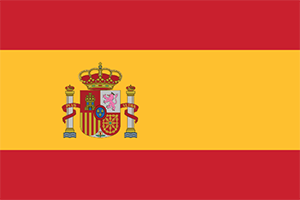Spain - Country Background Information
- Describing the forms of education in the country
- Identifying an ‘inclusive setting’ in the country
- What an ‘official decision of SEN’ means in the country
- What ‘out-of-education’ means in the country
The EASIE data collection covers all recognised forms of education at ISCED levels 02, 1, 2 and 3.
This means any type of education organised by or approved by any recognised educational provider in the public or private sector: municipality, local or regional educational provider from the public or private sector, working with/for ministries responsible for education and areas such as health, social, welfare, labour, justice, etc.
6–16
What are the typical age ranges for the ISCED levels?
| ISCED LEVEL 02 | ISCED LEVEL 1 | ISCED LEVEL 2 | ISCED LEVEL 3 |
|---|---|---|---|
| 3-5 | 6-11 | 12-14 | 15-17 |
According to the UNESCO OECD Eurostat (UOE) Methodology, private institutions are considered if they are controlled and managed by a non-governmental organisation. Private institutions are further classified as government-dependent private if they are financed mostly by public sources, and independent private institutions if they are not.
In the EASIE data collection, an inclusive setting is operationally defined as:
A recognised form of education where the child/learner follows education in mainstream classes alongside their peers for the largest part – 80% or more – of the school week.
The 80% time placement benchmark clearly indicates that a child/learner is educated in a mainstream class for the majority of their school week. At the same time, it acknowledges possibilities for small group or one-to-one withdrawal for limited periods of time (i.e. 20% or one day a week).
Very few participating countries can provide exact data on children/learners spending 80% of their time in a mainstream group/class. However, all countries can apply one of three agreed proxies that provide an approximation to this benchmark:
- Placement in a mainstream class implies over 80% or more
- Data is available on the number of hours of support allocated to a child/learner
- Placement in a mainstream class implies over 50% or more.
In the EASIE data collection, the agreed operational definition is:
An official decision leads to a child/learner being recognised as eligible for additional educational support to meet their learning needs.
Countries may have different types of official decision, but for all official decisions:
- There has been some form of educational assessment procedure involving different people. This procedure may involve the child/learner, parents, school-based team members, as well as professionals from multi-disciplinary teams from outside the child’s/learner’s (pre-)school.
- There is some form of legal document (plan/programme, etc.) that describes the support the child/learner is eligible to receive, which is used as the basis for decision-making.
- There is some form of regular review process of the child/learner’s needs, progress and support.
Criteria for an official decision of SEN:
- There has been an educational assessment procedure involving a multi-disciplinary team
- The multi-disciplinary team includes members from within and external to the child’s/learner’s (pre-)school
- There is a legal document which describes the support the child/learner is eligible to receive and which is used as the basis for planning
- The official decision is subject to a formal, regular review process, especially in changes of educational stage.
The educational evaluation procedure includes prior parental consent, an assessment of the pupil’s educational needs by a multi-disciplinary team, and finally, a recommendation from the school inspectorate. The pedagogical and curricular intervention and support needed are based on the above guidelines.
An official report where the pupil’s educational needs are described, along with educational recommendations and guidelines.
The class teacher and the school counsellor share the official report with the rest of the team, teachers and school teachers specialised in therapeutic pedagogy and/or speech and language, depending on the need described. The team members design the necessary actions based on the report’s recommendations.
The assessment of the children/learners depends on their characteristics. Therefore, the assessment criteria are modified to fit with the adjustments carried out in the education objectives and contents established in the educational recommendations and guidelines at the beginning of the course. All professionals involved in the educational assessment procedure take part in the formal, regular review process, which is compulsory in changes of educational stage.
Within the EASIE data collection, specific questions examine children/learners who are out of education. This means children/learners who should, by law, be in some form of recognised education, but who are out of any form of recognised education. A recognised form of education is any type of education organised by or approved by any recognised educational provider in the public or private sector.
There are no learners that are out of formal education.
